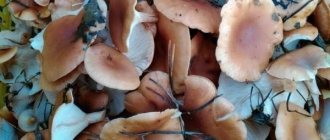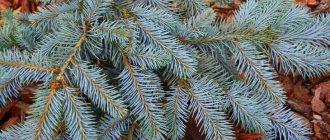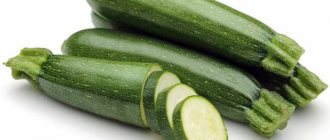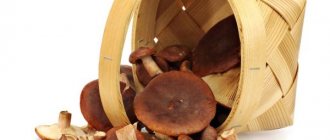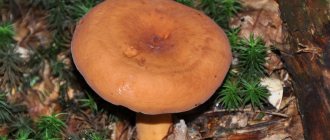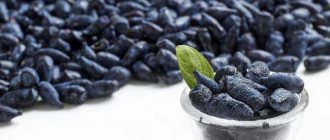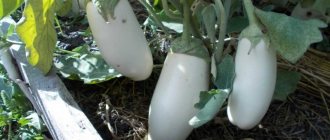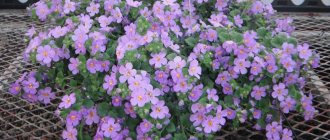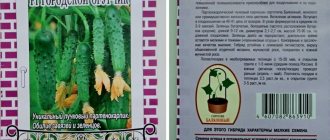Mushrooms
0
1237
Article rating
Kira Stoletova
The Gigrofor mushroom has unique properties that have a positive effect on the human body. Studying the characteristics of this type of mushroom allows you to enjoy collecting them and benefit from consuming the crop.
Description of the mushroom variety Gigrofor
Characteristics of hygrophore
hat
— Advertising —
The diameter of the hygrophore cap is 4-10 cm, its surface is mucous, its shape is convex, with a tubercle, the cap is dimly colored - in white, gray, olive, yellow, rarely reddish tones. The plates are sparse, thick, descending, white, less often yellow or pink. The spores are white.
Pulp
The pulp of the hygrophorus is white, with a dense consistency, weak taste and mushroom aroma.
Leg
— Advertising —
The leg is cylindrical, dense, mucous, solid. The color matches the cap.
Edibility of hygrophore
Hygrophores are edible mushrooms with a wide range of beneficial properties. Thus, this type of mushroom contains vitamins (B, A, C, D, PP), amino acids and various macro- and microelements (phosphorus, calcium, potassium, sulfur, sodium, manganese, zinc, iodine). In terms of protein content, hygrophor is close to meat. Hygrophores are also a low-calorie product that helps in weight loss and removes toxins from the body.
Hygrofor has a pleasant, delicate taste, its flesh is dense and fleshy, the mushroom does not boil down much. Most often, hygrophores are used for pickling and marinades, fried with sour cream and onions, or added to julienne, soups and sauces. When preparing hygrophorus, be sure to clean its mucous skin, as it has an unpleasant taste and can ruin the dish. In China, a delicious tincture is prepared based on hygrophorus and yak milk.
Due to the high percentage of fiber in hygrophores, mushrooms are quite heavy on the stomach, so their excessive consumption causes discomfort or heartburn. These mushrooms are also not included in the diet of children under 14 years of age for this reason.
Evaluation of taste qualities, medicinal properties, benefits and possible harm
The main feature of the sweet tooth is its sweet and pronounced mushroom taste. This is the only representative of Hygrophores that can boast of such a characteristic, despite its size. Often used by housewives for making pickles or roasts. It can cause harm to the digestive tract only in the case of severe overeating, but during the entire practice there are only a few such episodes.
The mushroom is not officially used in pharmacology, but the sweet tooth has the prospect of becoming a source of a new type of antibiotics. Main advantages:
- Has an antifungal effect.
- A good antibacterial remedy for colds.
- Has secondary metabolites.
Today, scientists are actively studying the blackhead. Perhaps in the future the Hygrophora family will be used to produce antibiotics to treat influenza and other viruses.
REFERENCE! In folk medicine, decoctions of dried and dried mushrooms are often prepared. The broth will help get rid of a lingering cold and restore vitality. In the north, sweets are used to prevent various infections.
Types of hygrophorus mushroom
Fragrant, aromatic, or fragrant hygrophorus (Hygrophorus agathosmus)
An edible mushroom with a fleshy fruiting body. The cap is 4-8 cm in diameter, convex in shape, gradually becomes flat-convex, the edge is tucked, the surface is sticky and slimy, especially at high humidity. The color of the cap is gray, yellowish-brown or off-white, rarely with a green tint. The plates are sparse, adhere to the stem, and are white. The pulp is whitish or pale gray in color, soft, with a strong aroma reminiscent of bitter almonds, celery or anise, insipid in taste. The length of the leg is 4-10 cm, thickness - 0.6-1.5 cm. The leg is central, cylindrical, dry or wet, the surface is not mucous. The color of the leg is white, gradually becoming gray. The spores are white.
Grows from August to September in coniferous and mixed forests. Widely distributed in temperate climates.
Yellowish-white hygrophorus (Hygrophorus eburneus)
An edible mushroom also known as ivory waxcap and cowboy handkerchief. Found in Europe, North America, North Africa.
The fruit body is white. In humid weather, the cap becomes covered with a thick layer of mucus. It feels like wax.
Early hygrophorus (Hygrophorus marzuolus)
A rare species that is also found under the names March hygrophorus and snow mushroom. The diameter of the cap is 4-10 cm, the structure is thick, fleshy, the shape of the young mushroom is convex, flattening with age. The surface is curved, the edges are wavy. The skin is smooth, dry, slightly pubescent. Young mushrooms have a light gray or whitish cap, while mature mushrooms have a lead-gray or blackish cap with spots. The pulp is dense, white, turning gray with age. The aroma is weak, pleasant, the taste is not pronounced. The leg is 3-8 cm long, 1.5-4 cm wide, cylindrical, curved, solid, thinning towards the bottom. Color – whitish or gray, with a silvery tint. The spores are white.
Unlike other hygrophores, the species is very early, appears in March and grows until the beginning of May. Found in coniferous and deciduous forests, often under beech trees.
An edible mushroom used to prepare soups and side dishes for meat dishes. Since March hygrophorus appears very early, it cannot be confused with other mushrooms, including poisonous ones.
Olive-white hygrophorus (Hygrophorus olivaceoalbus)
The diameter of the cap is 2-6 cm, the shape is hemispherical in young mushrooms, convex or flat in old ones, covered with a layer of mucus. The color of the cap is gray-brown or olive-brown, darker in the center, becoming lighter as it matures. The pulp is strong, white, yellow in the center, the structure of the pulp in the stem is fibrous. The aroma and taste are weakly expressed. The leg is 4-8.5 cm long and 0.4-1.0 cm thick, central, cylindrical or spindle-shaped, color olive-brown. The spores are white.
An edible mushroom that is used fresh for food.
It grows from August to November in coniferous and mixed forests next to spruce. Widely distributed in Eurasia.
Hygrophorus russula or russula (Hygrophorus russula)
A fleshy, edible mushroom that grows in the deciduous forests of the Northern Hemisphere.
The diameter of the cap is 5-12 cm, the shape is hemispherical, gradually becomes convex, flattened, the edge is tucked. The surface is smooth, in humid weather it becomes sticky-mucous, in young mushrooms it is whitish or pinkish in color, with pink spots, then it becomes pink-red and in mature mushrooms it becomes wine-red. The pulp is dense, white, turns pink when cut, the smell is weak, floury, the taste is not pronounced. The leg is 6-8 cm long, 1-2.5 cm thick, central, tapering downwards, club-shaped or fusiform, white in color with pinkish-brown spots. The spores are white.
The mushroom is edible, used fresh, pickled or salted. It is considered the best in taste of all species of the family.
It grows from August to November in broad-leaved and mixed forests, next to oak.
Chinese salad
The main rule of Chinese cuisine is to never use mayonnaise or sour cream as a dressing. For these purposes, it is necessary to use a mixture of various sauces. Regular salt is added to such food extremely rarely.
Ingredients
To obtain the dish you will need the components indicated in the table:
| List of products | Quantity |
| Sunflower oil | 100 ml |
| Fresh cucumbers | 2 pcs. |
| Glass noodles | 100 g |
| Winter honey mushrooms | 2 packages |
| Peppercorns | 4 things. |
| For the marinade | |
| Carnation buds | 2 pcs. |
| Filtered water | 500 ml |
| Laurel leaves | 2 pcs. |
| Table salt, table vinegar, granulated sugar | taste |
| For refueling | |
| Ginger and lemon juice | 2 and 4 tsp. respectively |
| Soy sauce | 6 tbsp. l. |
| Spices (salt, sugar and pepper) | according to preferences |
Enoki mushrooms (it is recommended to prepare salads not only with noodles, but also with meat, fish, and vegetable ingredients) can be used in snacks without marinating or cooking.
Step-by-step cooking process
The sequence of stages of creating food:
- Initially, you need to cut off the base of the mushrooms, then rinse the winter mushrooms well in running water.
- While excess moisture drains from the product, you need to combine all the marinade components specified in the recipe in a bowl and mix the composition thoroughly.
- Then you should transfer the Enoki into a convenient container, pour the resulting mixture over them, keep the honey mushrooms in this form for no more than 2 minutes, and then put them in the refrigerator for a day.
- When the mushrooms are marinated, you need to prepare the glass noodles. To do this, you need to place the product in a convenient container, pour boiling water over the product, leave it in this state for 5 minutes, then drain the liquid.
- Now you need to combine all the ingredients intended for dressing in a bowl, add spices to taste, and mix the composition well.
- Next, you need to chop the cucumbers into thin strips, transfer the slices into a deep salad bowl, add completely cooled noodles and mushrooms removed from the marinade to the vegetable, and season the combined products with fragrant sauce.
The prepared dish should be left to steep for 30 minutes, then served.
Growing hygrophorus at home
To grow hygroform at home, you will need mycelium powder, which is sold in specialized stores. One such package is enough for 1 m2 of area. Before sowing, the seeds are mixed with dry soil or sand. Mycelium is planted under trees. The soil is first loosened, making depressions from 5 to 15 cm. A mixture of mycelium and sand is scattered onto the surface and covered with forest or garden soil with humus. Then the area is watered (10 liters of water per 1 m2 of area), and the soil remaining after loosening the soil is poured on top.
Mycelium can be planted at any time of the year and under any trees. The harvest is harvested 4 times a year: twice in spring and autumn. To ensure high yields, the site is fertilized with humus every year when mushrooms are not growing.
You can also grow hygrophorus indoors, like champignons.
False doubles
During late autumn there are no dangerous false representatives as such. The olive white hygrophorus has only one poisonous fellow - the white grebe. At a young age, when the sweet cap is not yet deformed and has a bell shape, it is very similar to an early toadstool, so mushroom pickers often avoid the species. However, during the collection period, which usually falls at the end of October, the false double no longer grows, so even a beginner can collect hygrophores. The difference can be seen in the photo. It is worth highlighting separately the hymenophore, which in the sweet tooth extends directly to the stalk and has more pronounced plates.
- Maiden Hygrofor - grows in clearings, similar in shape, but has red spots all over the body. In taste and smell, the mushroom differs from the sweet mushroom only in shades; in the false mushroom it is weak and barely noticeable, and the flesh is dry.
For comparison, you should pay attention to the photo. Mushrooms, if you look closely, have obvious differences in shape. If a lover of quiet hunting confuses species of the same family, there will be nothing wrong with that. Representatives are edible and not dangerous.
Interesting facts about the mushroom
- The enzymes that hygrophores are rich in help in the treatment of colds, infectious diseases, as well as diseases of the upper respiratory tract. They exhibit an antiseptic effect and strengthen the immune system. These mushrooms also help strengthen the heart muscle, lower cholesterol, improve memory, stimulate the body and reduce fatigue.
- In ancient times, hygrophores were called “food of the Gods” and were even considered a means of achieving immortality.
